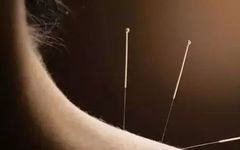When it comes to acupuncture, many people question its efficacy. In fact, among those who doubt, ninety-nine percent have never tried acupuncture, and the remaining one percent have not encountered a skilled acupuncturist.
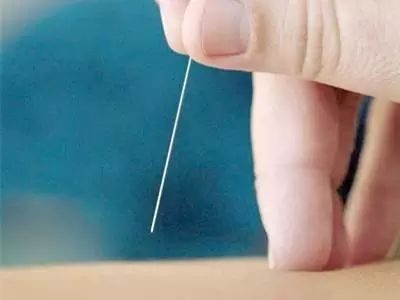
Do you question the usefulness of acupuncture?
Among those who doubt, ninety-nine percent have never tried acupuncture, and the remaining one percent have not met a good acupuncturist. There is a specific term for the effects of acupuncture: li gan jian ying (immediate effect). Another term is zhen ru tong xiao (pain relief upon needling) or zhen ru tong jian (pain reduction upon needling). Some symptoms can be alleviated or diminished immediately after needling. For example, severe lower back pain or headaches can be significantly reduced right after acupuncture, and conditions like asthma and heart disease can see immediate relief, preventing life-threatening situations.
What is the mechanism of acupuncture? Why does needling sometimes hurt and sometimes not?
First, it is essential to understand the mechanism of disease, which can be either xū (deficiency) or shí (excess), biǎo (exterior) or lǐ (interior). For deficiency, we tonify; for excess, we disperse. Acupuncture mobilizes the body’s yang qi (vital energy). If it is a deficiency syndrome, we identify which meridian is deficient and needle specific points to tonify that meridian. If it is an excess syndrome, we similarly identify the problematic meridian and needle specific points to disperse the excess, allowing the yang qi to concentrate on the affected area, unblocking the obstructed meridian, thus alleviating pain.
If the disease is related to the internal organs, we must needle points associated with those organs to mobilize yang qi for treatment. Therefore, for lower back pain, whether due to lumbar disc herniation, early cold-dampness, or yang deficiency, as long as the correct points are needled, significant effects can be observed. The same applies to knee pain, whether from bone spurs, cysts, or osteoarthritis; correct needling can quickly relieve soreness. It is particularly noted that some chronic knee patients, where cartilage has severely worn down, may feel the bones grinding together while walking. This can also be treated with acupuncture, but it may take four to five sessions to eliminate that sensation. After all, cartilage regeneration takes time. Of course, herbal medicine can also be effective.
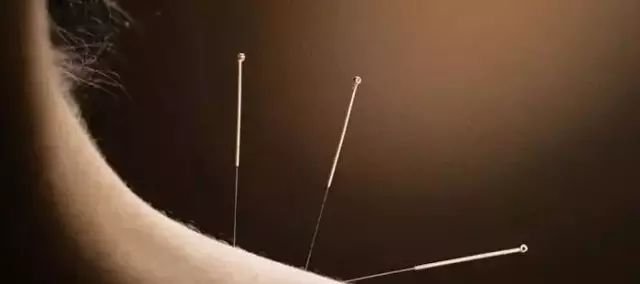
What role does acupuncture play?
Needling acts as a conductor for the body’s yang qi, consciously directing it to unblock meridians and nourish deficient muscles. This differs from herbal medicine, which relies on the power of herbs to unblock meridians. Different herbs act on different excess syndromes and have varying affinities for different body parts, necessitating the selection of various herbs for different conditions. Acupuncture mobilizes the body’s yang qi to unblock meridians; as long as the problematic meridian is identified, specific points can be needled, regardless of whether the issue is wind, cold, or dampness. Acupuncture is about utilizing one’s own energy to expel disease, while herbal medicine seeks external force to unblock meridians and tonify deficiencies.
How to distinguish the skill level of an acupuncturist?
Currently, the quality of acupuncturists varies widely. A method to assess their skill is that for general pain conditions, as long as there is no bone injury, acupuncture should achieve a level of pain relief. Even if it does not completely eliminate pain, it should significantly reduce it. If this is not achieved, the acupuncturist’s technique may not be proficient, or they may have needled the wrong points.
If a patient experiences a heart attack, dizziness, or an asthma attack, a good acupuncturist can immediately alleviate the patient’s suffering, relieving chest pain and breathing difficulties. Acupuncture is also notably effective for patients with paralysis after a stroke; after several sessions, patients can gradually regain movement, and some who cannot speak may be able to speak after just one session. For facial paralysis, after one session, facial muscles can begin to respond; although not fully restored, with continued treatment, recovery is swift.
What is moxibustion?
Acupuncture includes both needling and moxibustion. While needling has been discussed, moxibustion is often less understood.
Moxibustion involves igniting ai cao (mugwort) to warm the body. The most common methods are ge jiang jiu (ginger moxibustion) and ge yan jiu (salt moxibustion).
1. Ginger Moxibustion
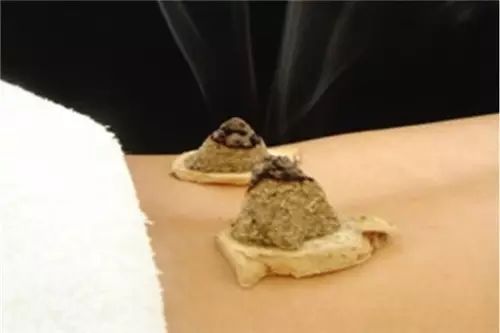
Ginger moxibustion involves placing a slice of fresh ginger on the acupuncture point, then shaping the moxa into a cone and placing the cone on the ginger. The tip is ignited, and since moxa burns slowly, it gradually warms the area. The characteristic of moxa is that it descends; although the smoke rises, the heat penetrates downwards, allowing the warmth to reach the muscles through the skin.
Mugwort has the property of warming and unblocking meridians, which is determined by its medicinal properties. Therefore, when the heat from burning mugwort reaches the meridians, it can dispel cold-damp pathogens. Additionally, mugwort is warming and can tonify yang qi, making it effective for treating yang deficiency conditions. The only caution is for those who often experience dry mouth and prefer cold drinks, have a good appetite, and feel hot in their hands and feet, as moxibustion is not suitable for them due to their internal heat.
It is important to distinguish between hot hands and feet and warm hands and feet; the former indicates internal heat, while the latter is normal. People with hot hands and feet feel hot but have a normal temperature when touched. Moxibustion can dispel cold-dampness and tonify yang deficiency, but it cannot clear heat. For those with heat conditions, moxibustion can exacerbate their symptoms.
When should moxibustion be chosen?
Many people worry about having heat and thus avoid moxibustion. Here is a symptom to help you distinguish: any symptoms of soreness, numbness, or pain can be treated with moxibustion. For pain, press on the painful area to see if it feels better. If it does, it is likely cold pain, and moxibustion can be used. If touching the area causes severe pain (like a wound), moxibustion should be avoided.
2. Salt Moxibustion
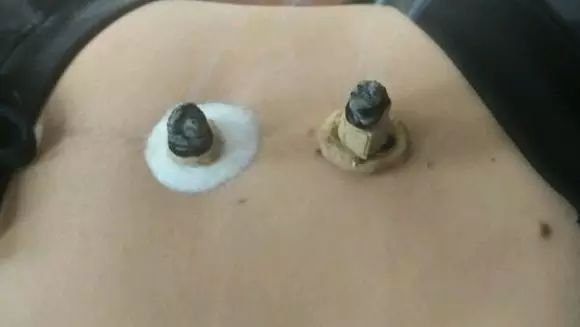
Salt moxibustion is similar to ginger moxibustion, typically performed on the navel. Salt is placed in the navel, and the cone of moxa is placed on top and ignited. This method is effective for cold in the abdomen, loss of appetite, and frequent stomach rumbling.
It is important to note that during ginger or salt moxibustion, if you feel any heat, regardless of where the first cone of moxa burns, it should be removed immediately. Do not let it burn out to avoid burns and scarring, especially for women.
After removing one, you can place another and ignite it. Each cone of moxa is considered one treatment, hence the saying in ancient medical texts: “moxibustion five cones” reflects this principle. If unfortunate enough to get burned, do not puncture the blister from the top; instead, puncture from the edge with a needle at skin level to release the fluid, and finally, apply da huang fen (rhubarb powder) to prevent scarring.
To prevent burns during moxibustion, many other moxibustion tools have been developed, such as moxa boxes, where moxa is shaped into cones and suspended on a wire connected to a box that covers the sides, reducing the risk of burns.
3. Suspended Moxibustion
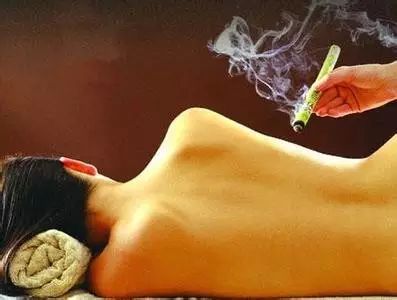
Another method is suspended moxibustion, where moxa is shaped into sticks and held over the acupuncture point or affected area. While these new methods are convenient, in my personal experience, they are not as effective as traditional ginger or salt moxibustion. Beginners or those seeking health maintenance can use these methods, but for serious conditions, I recommend trying genuine ginger or salt moxibustion (the latter is only for the navel).
4. Tian Ying Moxibustion
For those unfamiliar with acupuncture points, moxibustion can be applied directly to the painful area, known as Tian Ying moxibustion. All moxibustion supplies are available online, and there is no need to worry about counterfeits, as mugwort is widely available, making the cost of counterfeiting higher than using genuine mugwort. Although these moxibustion tools can prevent burns, if you feel heat during the process, they should still be removed, as there have been cases of burns even with moxibustion tools.
A comparison of needles, moxibustion, and herbs
In my opinion, the advantage of acupuncture is its speed. For acute conditions like heart attacks or asthma attacks, immediate needling can alleviate the patient’s condition, allowing for gradual herbal treatment. Combining acupuncture and herbs can lead to quicker recovery.
If only acupuncture is used, except for some superficial conditions, chronic diseases require a treatment course. After the first session, a patient may feel 90% better, but once the needles are removed, the remaining pathogenic factors that were not expelled may regroup, leading to a slight return of symptoms. However, this is still an improvement of 60% compared to before treatment. Subsequent sessions can yield similar improvements, and generally, acupuncture should be spaced out every other day, as too frequent stimulation of the body’s yang qi can be detrimental. A two-day interval is less taxing on the energy, while multiple sessions in one day can exhaust the yang qi.
For severe illnesses, the treatment duration must be extended, as recovery takes time. It is important to note that acupuncture should ideally be done every other day, rather than once a day followed by a week-long gap, as residual pathogenic factors can re-enter the body, which is why some people say acupuncture is prone to relapse. They often do not follow the treatment schedule properly. Only when all pathogenic factors are expelled and yang qi is restored can one be considered truly healed.
Acupuncture can also be effective for heat conditions, unlike moxibustion, which is not suitable for heat conditions due to its inherent warming properties. Acupuncture mobilizes the body’s yang qi without bias, allowing it to unblock heat-related obstructions. Therefore, conditions that are painful to the touch or pressure can be treated effectively with acupuncture, yielding immediate results.
However, the effect of acupuncture on tonifying yang qi is not as strong as that of moxibustion, and moxibustion is less effective than some potent yang tonifying herbs. Sometimes, when a patient’s yang qi is severely deficient, using the warmth of mugwort or the strength of herbs can yield better results. Moreover, the effects of herbal medicine tend to be more lasting.
Another advantage of acupuncture is that there is less concern about misdiagnosis. If the wrong point is needled, it generally does not have adverse effects on the body, whereas taking the wrong herbal medicine, especially using cold herbs for a cold condition, can worsen the situation.
Therefore, I recommend that if you have discomfort, acupuncture should be the first choice. I have little faith in the current level of many practitioners; there are many famous doctors, but few skilled ones. Acupuncture is easier to diagnose, and even if the wrong point is needled, it usually does not have significant negative effects.
In ancient times, traditional Chinese medicine often combined acupuncture and herbs, leading to faster recovery than using either method alone. Moxibustion can generally be performed by patients at home, as long as the doctor indicates the points. However, modern TCM often separates acupuncture and herbal medicine, especially in large hospitals where TCM is divided into acupuncture and herbal departments, which affects treatment efficacy. Only small clinics and some folk practitioners continue to combine acupuncture and herbs.
This article is reprinted from the internet, and the copyright belongs to the original author. If there is any infringement, please contact us for immediate deletion!
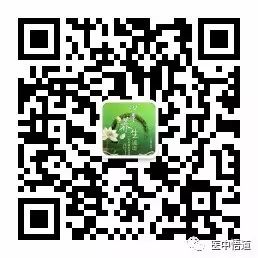
Remember to long-press the QR code to follow the editor!

